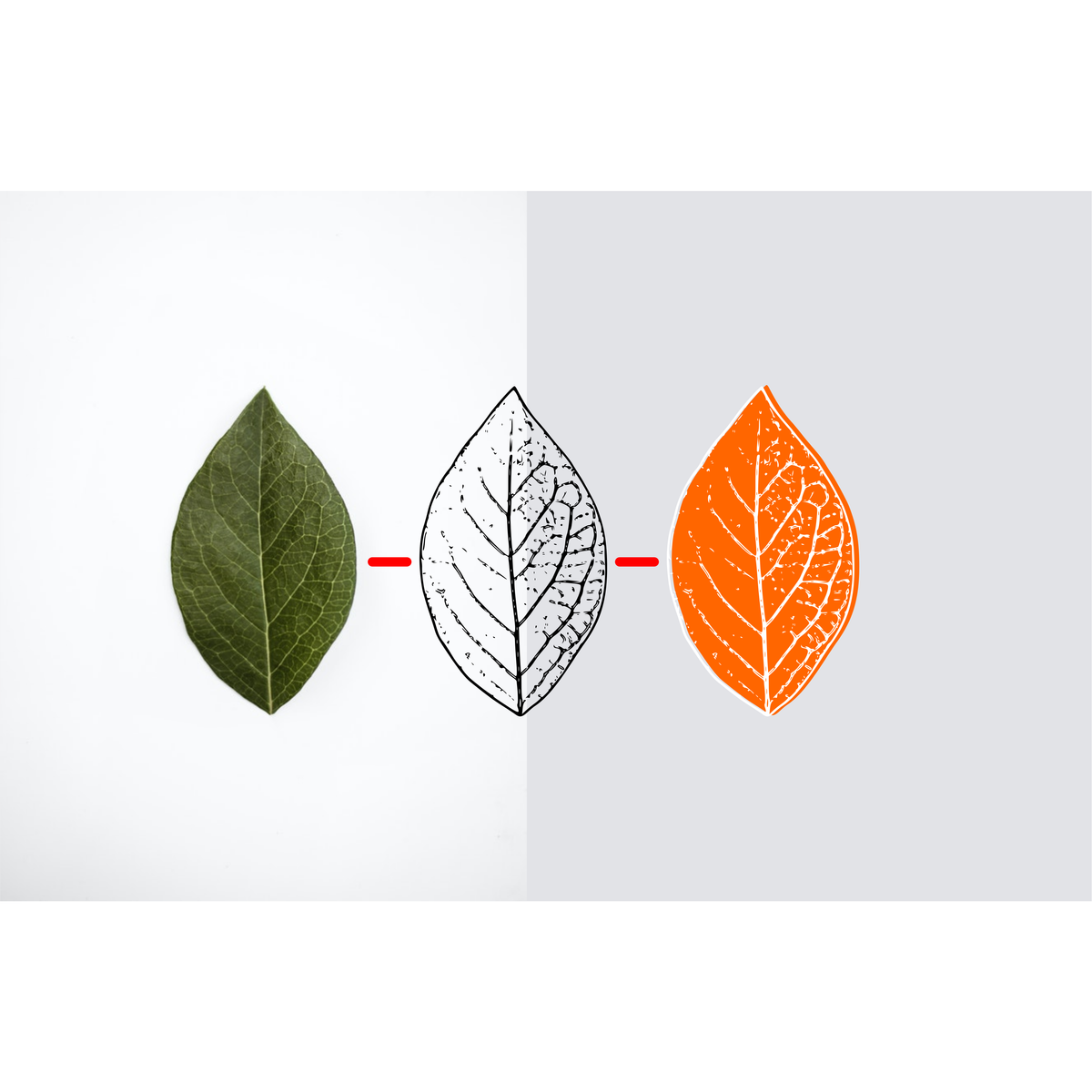Back to Courses









Music And Art Courses - Page 11
Showing results 101-110 of 257

Make Any Image into a Vector Graphic with Inkscape
By the end of this project, you’ll be able to import and convert raster images, including photos and old logos, to a vector graphic with Inkscape. Inkscape is a free and open-source vector graphics program, and it offers built-in tools that help you turn images into vector graphics, making them easy to resize and edit. These vector versions can be used for all kinds of projects, from web images to stickers.
To convert raster images to vector graphics, you’ll learn about and use two of Inkscape’s tools: Trace Bitmap and the Bezier Pen Tool. You’ll also practice editing those images to customize them for later use. Finally, you’ll practice exporting what you’ve created.
Note: This course works best for learners who are based in the North America region. We’re currently working on providing the same experience in other regions.

Musicianship: Chord Charts, Diatonic Chords, and Minor Keys
After a tremendous response from learners on Coursera, Berklee Online has created a Developing Your Musicianship specialization, and this course is the second course in the series. If you have a basic knowledge of music theory or if you have completed Developing Your Musicianship I, this course will continue to help you understand key musical concepts, enabling you to create and perform contemporary music. Taught by Berklee College of Music professor George W. Russell, Jr., the course includes four lessons that delve into the next level of harmony and ear training.
The course will introduce you to new key signatures, including minor tonalities, and how they are constructed. You will train your ear to hear minor intervals and 7th chords. You will learn how to build 7th chords, and how to build common chord progressions. You will also learn the major pentatonic scale and how to construct melodies using this scale.
The course culminates with an assignment that asks you to compose and perform an 8-measure composition using popular chord progressions and the Major pentatonic scale. Just like Developing Your Musicianship I, the course is designed to impart the joy of creating music and sharing it with others.

Making Architecture
Making architecture offers a unique insight into the mind and work of an Architect, starting with the basics of the profession and culminating with the production of a scaled site model. The course should act as ideal preparation for those interested in undertaking an undergraduate degree in Architecture, although its flexible, intriguing and enjoyable content makes it accessible for all those looking to increase their knowledge in the field.
Delivered primarily by Professors from the IE School of Architecture and design in Segovia (Spain), the course begins by examining the mind-set of an Architect - asking how they think and what they do to train their creative minds, moving on to using inspiration from the environment to stimulate design ideas. Finally, the course concludes by looking at some of the more technical aspects of Architecture - such as composition, form, space and hierarchy - and stressing the importance of creating a story that helps define your design.
This fascinating content is delivered principally from the stunning design studio at the IE school of Architecture and features external videos from a few beautiful locations in the city of Segovia. Finally, it includes interviews from Pritzker Prize executive director - and Dean of the school of Architecture and design at IE - Martha Thorne, with a number of award winning practising architects such as Sarah Wigglesworth and Cristoph Ingenhoven.

How to Use Rectangle and Elliptical Marquee: Adobe Photoshop
By the end of this project, you’ll be able to use both the rectangular and elliptical marquee tools to select, move, and edit pieces of multiple images in Adobe Photoshop. You’ll practice creating different kinds of selections--including quick, simple selections and complex ones—to create a collage.
Use the marquee tools to turn many images into one, and control what’s visible inside an image.

Story and Narrative Development for Video Games
In this course, you will examine how storytelling acts as a vital mechanism for driving video gameplay forward. Looking at several historical and contemporary games, you will be asked to evaluate and interpret different story styles with the goal of identifying themes and procedures for your own game ideas. We'll examine traditional narrative story processes, such as three-act structure, and how they fit into game story flows and the strategic elements of gameplay. Ultimately, you will learn how to define character, setting, and structure to create a compelling game concept.

Developing Your Musicianship
Learn the basic concepts and approaches needed to understand, create, and perform contemporary music.
If you have a passion for music and are curious about how it works, or if you are a musician who learned to play by ear without formal study, this course will provide you with an engaging introduction to key concepts and approaches needed to understand, create, and perform contemporary music. Taught by Berklee College of Music professor George W. Russell, Jr., the course includes six lessons that delve into harmony and ear training—two areas of intensive focus for every entering Berklee student.
The course will teach you the major scale and minor pentatonic scale, and how they are constructed. You will learn what intervals are, how to sing them, and how to find them in music. The course explores tonal centers and how to find the key a song is in, in addition to common time signatures such as 4/4 and 3/4. You will learn how to build chords—major and minor triads, and major and dominant seventh chords—and how to build a common chord progression—the I IV V. You will also learn how to recognize the blues and AABA song forms, and write a basic chord sheet to express your song ideas.
In addition to the video lectures, each lesson features Berklee student performances and interviews. The students share their musical journey and offer advice for those wanting to study music. The course culminates with an assignment that asks you to compose and perform a riff blues tune using the minor pentatonic scale. Above all, the course is designed to share the joy of creating music and sharing it with others.
Samy Elgazzar, a graduate of Berklee College of Music and a successful composer, will be your Teaching Assistant (TA) for the course.

Understanding the Music Business: What is Music Worth?
This course will examine the music industry in the United States, with the unique perspective gained by Vanderbilt University’s location in Nashville, TN. Nashville is a major center of music in the United States, and the music created here has a global reach, particularly in the country, rock, pop, singer-songwriter, and Americana genres. However, students will learn that the basic principles of recording, marketing, copyright, licensing, and live performance are the same, regardless of musical style or genre.
The music business is one of the most rapidly changing industries in the US today. It is also an industry filled with contradiction, and media headlines and anecdotal stories often add to the confusion. Here are just a few statements paraphrased from recent news stories:
* The music business has collapsed
* Demand for music is expanding at the greatest rate in history
* Historic recording studios are closing at an alarming rate
* More people are making recordings than ever before
* Musicians usually lose money touring
* Musicians usually make money touring
* Major artist pulls songs off streaming services because they don’t pay fairly
* Major artist makes a fortune from streaming services
* People won’t buy records anymore
* Vinyl record sales are soaring
This course will attempt to make sense of these seemingly contradictory trends and data, outline the basic structure and mechanisms of today’s music industry, and encourage students to think critically and entrepreneurially about the future of music. Leaders from various areas of the music business will lend their perspectives through in-depth interviews, and footage from a recording session will give learners a behind the scenes look at how a song goes from the spark of an idea hummed into a cell phone to a finished recording.
Participants will grapple with questions about art and commerce which are both timeless and crucially important today, and will emerge from this course with tools allowing them to make more informed decisions as creators, promoters, and consumers of music.
Course launches February 19, 2016.

Write A Feature Length Screenplay For Film Or Television
Write a Full Length Feature Film Script
In this course, you will write a complete, feature-length screenplay for film or television, be it a serious drama or romantic comedy or anything in between. You’ll learn to break down the creative process into components, and you’ll discover a structured process that allows you to produce a polished and pitch-ready script by the end of the course. Completing this project will increase your confidence in your ideas and abilities, and you’ll feel prepared to pitch your first script and get started on your next. This is a course designed to tap into your creativity and is based in "Active Learning". Most of the actual learning takes place within your own activities - that is, writing! You will learn by doing.
Here is a link to a TRAILER for the course. To view the trailer, please copy and paste the link into your browser.
https://vimeo.com/382067900/b78b800dc0
Learner review: "Love the approach Professor Wheeler takes towards this course. It's to the point, easy to follow, and very informative! Would definitely recommend it to anyone who is interested in taking a Screenplay Writing course!
The course curriculum is simple: We will adopt a professional writers room process in which you’ll write, post your work for peer review, share feedback with your peers and revise your work with the feedback you receive from your peers. That's how we do it in the real world. You will feel as if you were in a professional writers room yet no prior experience as a writer is required. I'm a proponent of Experiential Learning (Active Learning). My lectures are short (sometimes just two minutes long) and to the point, designed in a step-by-step process essential to your success as a script writer. I will guide you but I won’t "show" you how to write. I firmly believe that the only way to become a writer is to write, write, write.
Learner Review: "I would like to thank this course instructor. It's an amazing course"
What you’ll need to get started: As mentioned above, no prior script writing experience is required. To begin with, any basic word processor will do. During week two, you can choose to download some free scriptwriting software such as Celtx or Trelby or you may choose to purchase Final Draft, the industry standard, or you can continue to use your word processor and do your own script formatting.
Learner Review: "Now I am a writer!"
If you have any concerns regarding the protection of your original work, Coursera's privacy policy protects the learner's IP and you are indeed the sole owners of your work.

Digital Fashion Industry
Digital Fashion Industry is a collaboration between Parsons School of Design at The New School and The Digital Fashion Group Academy.
This course explains how digital technologies have the potential to dramatically impact and positively improve the fashion industry by creating a more sustainable digital ecosystem.
You will explore the role of the consumer as they demand a shift towards more ethically sourced products and brands, focusing on how this transformation happens through the support of a transparent supply chain during the design, manufacturing, and distribution of textiles and garments. Then, you will examine how blockchain technology has the potential to address industry concerns such as counterfeiting, environmental impact, and tracking and verification of goods.
Throughout the course, you will learn how important Artificial Intelligence (AI) is in automating the fashion industry and how it is changing the way products move from businesses to consumers.
At the end of the course, you will craft a Digital Fashion Mission Statement and construct a mind map of the key knowledge you have gained about digitization and Digital Transformation.

How to use the shape builder tool in Adobe Illustrator
In this project you will learn how to use the shape builder tool in Adobe Illustrator.
The Shape Builder tool allows you to create complex objects by merging and erasing simpler objects. This tool elevates your value as a graphic designer and being able to use it and understand how it's used it's awesome. Many tools are ignored in Adobe Illustrator and what makes you shine and be the graphic designer your client needs it's to be able to use any tool to make your job even better.
In this guided project you'll learn how to use the shape builder tool and you'll apply designs in every scenario. The shape builder tool lets you merge multiple simple shapes together to create very intriguing and complex designs. I hope you are excited to learn more about Adobe Illustrator and let's go ahead and start.
Popular Internships and Jobs by Categories
Find Jobs & Internships
Browse
© 2024 BoostGrad | All rights reserved